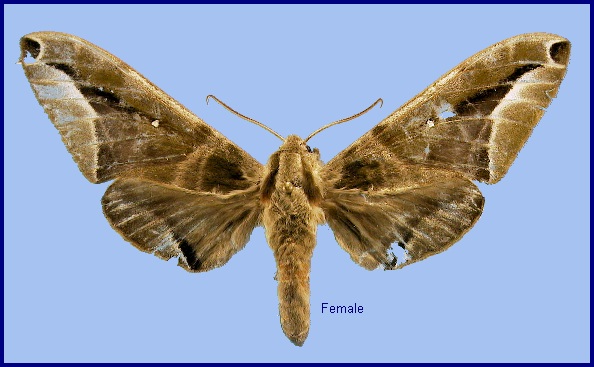
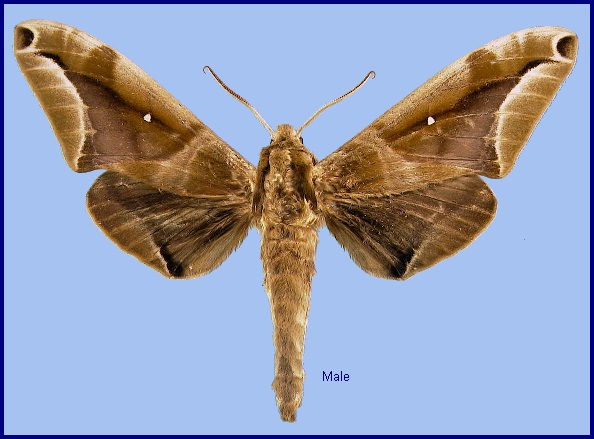
Daphnusa colligata Walker, 1856, List Specimens lepid. Insects Colln. Br. Mus. 8: 238. Type locality: North China.
Synonym. Daphnusa colligata Walker, 1856.
Synonym. Metagastes bieti Oberthür, 1886.
Synonym. Parum colligata saturata Mell, 1922.
Synonym. Parum colligata tristis Bryk, 1944.
[Further details on this species in Japan, as well as photos of many stages, can be found on Digital Moths of Japan.]
Wingspan: 69--90mm. Forewing upperside ground-colour grey tinged with brown, and with olive-brown and black markings. The outer border from R5 to tornus broad and much paler, limited by a curved grey-white submarginal line. At the apex between R5 and R4 a rounded blackish spot defined on the inside by grey-white as in Craspedortha porphyria, but much more distinct. A dark brown or blackish longitudinal streak from the submarginal line at M1, passing through the lower angle of cell along its lower edge to about the middle, where it joins the discal band. Discal band from costa to inner margin, slightly curved, grey, narrower between lower edge of cell and costa. A post-discal olive-brown oblique band, curved inwards at the costa. A conspicuous but small silvery-white spot at lower angle of cell. Costal margin grey, more or less suffused brown. Hindwing upperside smoky-brown. A darker submarginal line at M2 and M3, about mid-way between cell and margin, sometimes indistinct. A curved heavy black anal bar from anal angle to Cu1 (Bell & Scott, 1937).
Underside similar to upperside. Forewing with the longitudinal streak black and well marked. Hindwing with a similar streak between veins M1 and M2, not entering the cell. A pale outer border as on fore wing and a narrow post-discal grey-white band divided by an indistinct blackish line (Bell & Scott, 1937).
Head, thorax, antenna and abdomen pale brown; abdomen darker below, antenna grey or greyish-white above. Pilifer short. Retinaculum occasionally vestigial, frenulum shortened (Bell & Scott, 1937).
In the male genitalia, valva (clasper) sole-shaped, rounded apically, hairy on the inner surface; distal part of harpe forming a strongly chitinized ventral ridge, which is longitudinal, slightly bent dorsad, granulose, with the ventral surface slightly concave and the dorsal side convex. Apical edge of phallus bent proximad at the right and left side (Rothschild & Jordan, 1903).
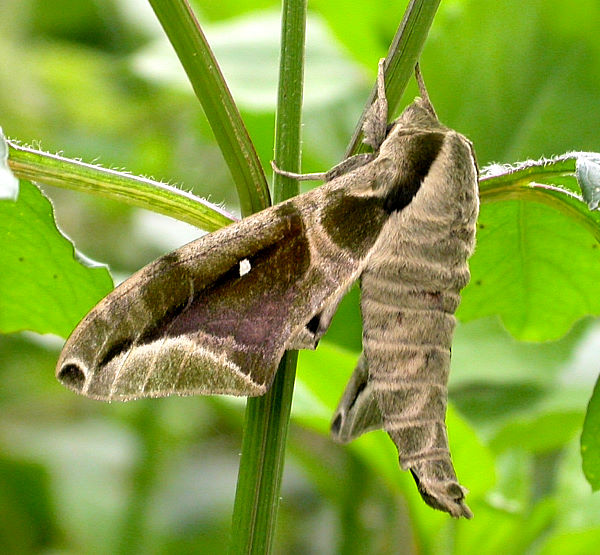
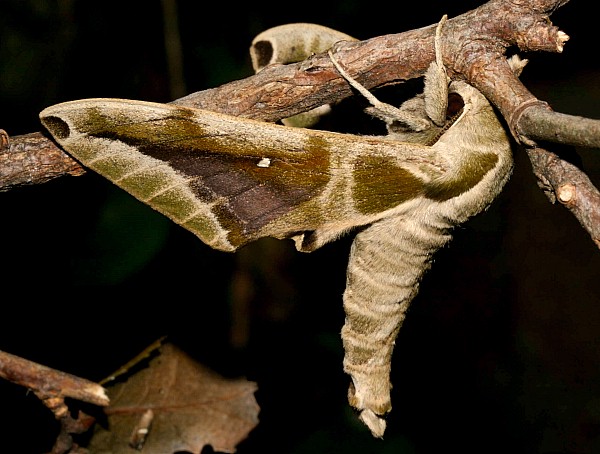
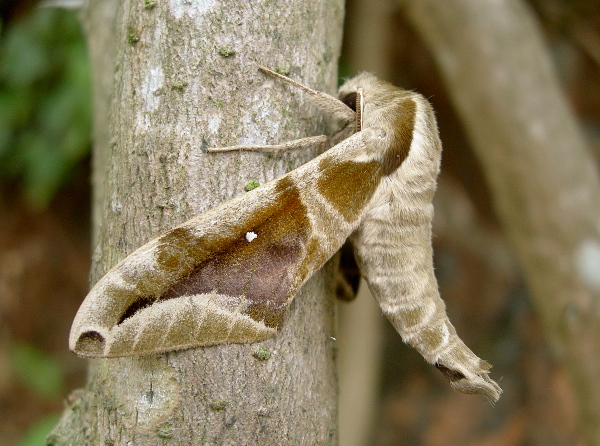
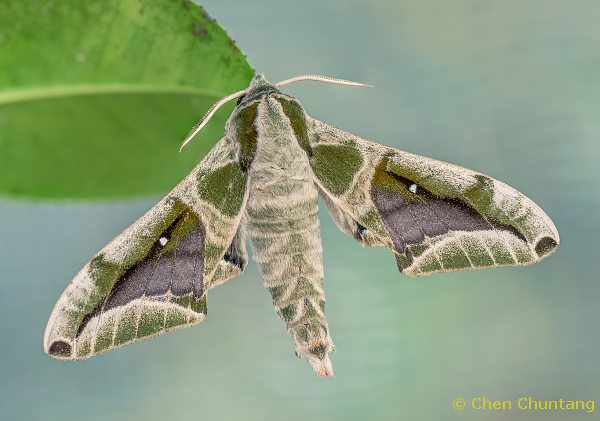
A forest species in Taiwan (Lin, 2000).
China: 21.iii-27.vii (Guangdong); iv (Guizhou; Hong Kong); v-vi (Yunnan); vi (Guizhou; Guangdong; Zhejiang; Hong Kong); vii (Xizang/Tibet); 22.vi-10.viii (Shanghai); viii (Fujian; Zhejiang); 5-18.viii (Zhejiang); ix (Shaanxi). Taiwan: 17.iv (Nantou Hsien); iv-v (Hualien Hsien). South Korea: vii [(unstated locality)]. Japan: 14.vi-14.viii (Honshu; Shikoku; Kyushu). Russia: 10-14.vi (Primorskiy Krai).
There are one or two generations a year in northern China, with adults flying between May and July (Yang, 1978). Farther south, there may be up to four generations.
Park et al. (1999) give mid May until late September as the flight period in Korea.
OVUM: Laid in masses, oval 1.6 x 1.3 mm, milky white, turning to yellow green before hatching in 6 days; chorion not eaten (Lin, 2000).
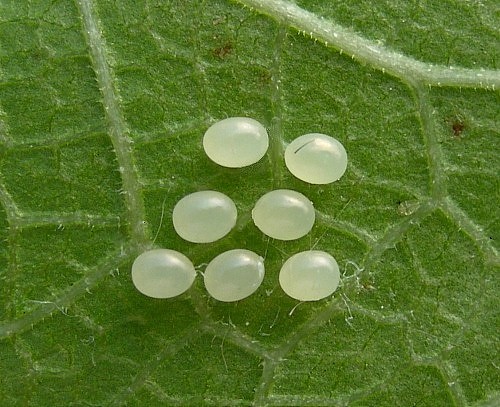
LARVA: Full-fed 50--70mm. First instar larva (L1) head pale yellow, body whitish green, body length 3.75 mm, horn black 1.2 mm, lasting 3 days. Intermediate instar larvae (L2-L5) head and body pale green to yellow green and granulated, head triangular, face with 2 whitish lines, body lateral with oblique whitish line, body length 15-48 mm, horn 3-8 mm. Final instar larvae (L6) head whitish green, with 2 white lines, body whitish green with whitish granulation, lateral with white oblique line, dorso-central with violet red line; horn black in some, 10 mm. Hatching to pre-pupa 27 days, pre-pupa to pupa 4 days (Lin, 2000).
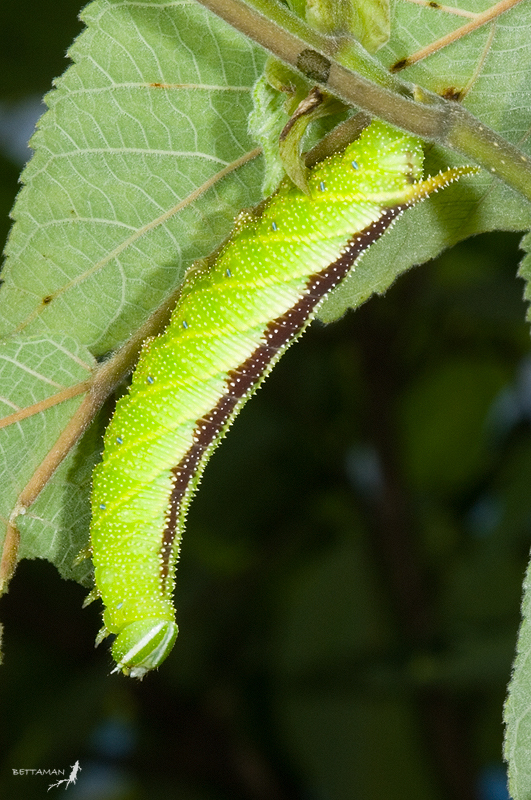
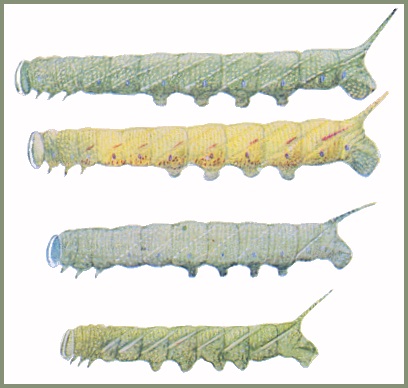
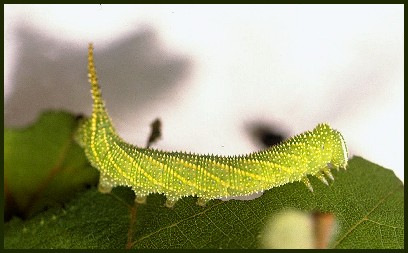
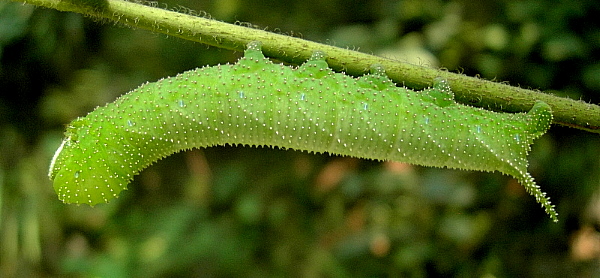
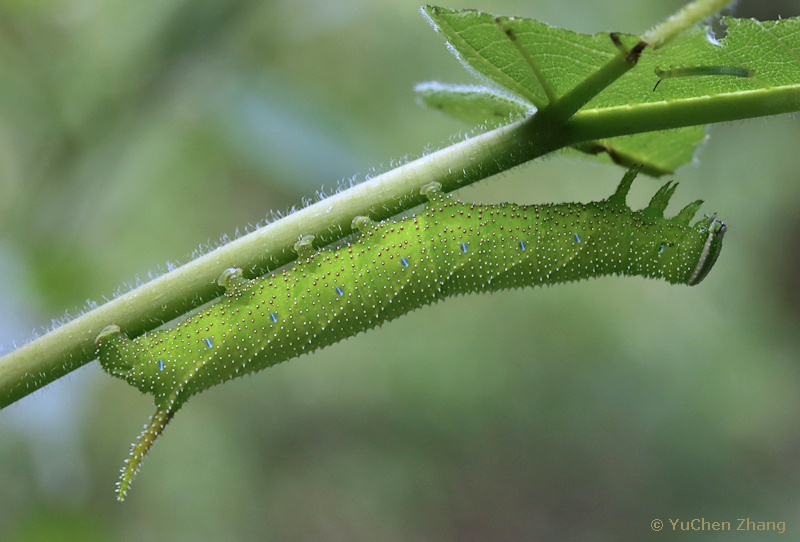
PUPA: 33--35mm. Brown, rough and rugose, not glossy, anterior blunt. Adult eclosion after 12 days (Lin, 2000).
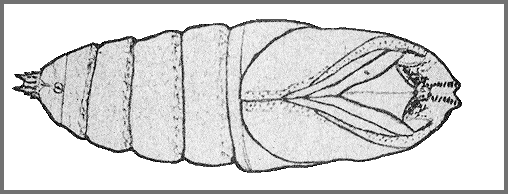
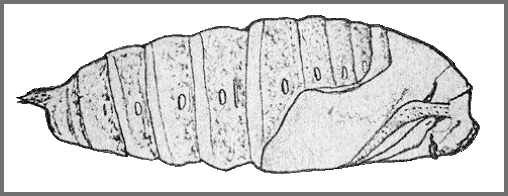
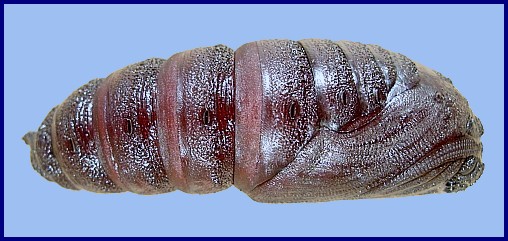
Larval hostplants. Recorded in Guangdong on Broussonetia kaempferi and Broussonetia papyrifera (Mell, 1922b); the latter is also utilized around Beijing (Pittaway, pers. obs. 2005). Chu & Wang (1980) also listed Morus alba. Apparently monophagous on Moraceae; the record on Salix (Lin, 1987) is highly suspect.
Recorded in Taiwan on Broussonetia papyrifera (Lin, 2000). Also Broussonetia kazinoki [syn. Broussonetia monoica].
Recorded in Korea on Broussonetia kazinoki and Broussonetia papyrifera (Park et al., 1999).
Recorded in Japan from Broussonetia kazinoki (Nozakai & Miyata, 1989).
In Laos and Thailand, also recorded from Maclura fruticosa (Eitschberger & Ihle, 2008).
Unknown.
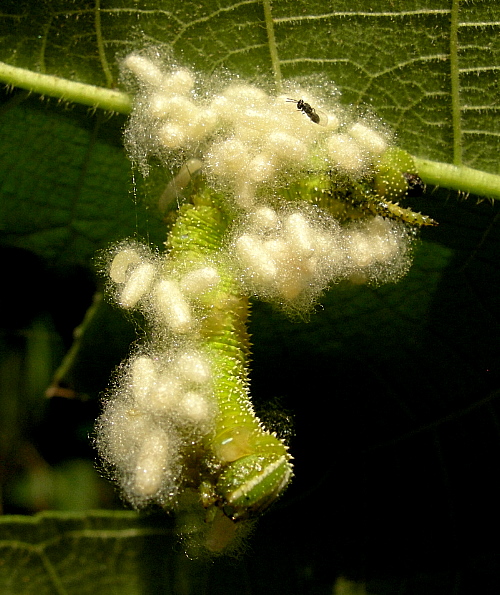
China: Nei Mongol (Dolonnur); Jilin (Changbaishan); Liaoning; Hebei; Beijing (Beijing Botanical Garden; Haidian); Shandong (Qingdao); Shaanxi (Yangling; Xunyang, 1380m); Qinghai (Nangqian County); Henan; Anhui (Mt. Huang Shan); Shanghai; Zhejiang (Ningpo; Tianmu Shan; Kuocang Mountain Nature Reserve); Hubei (Lichuan; Xianfeng); Sichuan (Kangding; Pengshui; Wolong National Nature Reserve); Chongqing (Chongqing); Yunnan (Changning Co., Songzhishanding, 2800m; Simao/Pu'er; Gaoligong Shan); Xizang/Tibet (Xiachayu, Zayu County); Guizhou (Jiucai Ling; Fanjingshan, Tongren County)); Hunan (Dayong); Jiangxi (Wanzai); Fujian (Longqi Shan; Guangze, 1200m); Guangdong (Guangzhou); Hong Kong (Clear Water Bay; Sai Kung); Hainan (Duowen Ling, nr Lingao; Longhushan, Wenchang City).
Taiwan: Miaoli Hsien; Taitung; Hualien Hsien (Taroko National Park; Antung; Hungyeh); Kaohsiung Hsien (Shanping, 640m); Nantou Hsien (Puli; Jenai; Bukai; Nansanchi; Basienshan, 800m; Feng-Huang Nature Education Area); Tainan Hsien (Kuantzuling); Taipei Hsien (Fushan; Sindian; Wulai).
South Korea: Baengnyeong-do & Daecheong-do; Kyonggi Province (Suwon; Gwangleung; Myungji-san; Soyo-san; Baeklyoung-do); Kangwon Province (Goseong; Chiak-san; Donghae; Chuncheon; Youngwol); North Chungchong Province (Chupungryung; Hwayangdong; Suanbo; Wolak-san); South Chungchong Province (Gyeryong-san; Chilgab-san); North Cholla Province (Jiri-san; Naebyun-san; Muju); South Cholla Province (Baekyang Temple; Naju; Jin-do; Soheuksan-do; Gurye); North Kyongsang Province (Sobaek-san; Naeyon-san; Juwang-san; Ulleung-do; Mungyungsaejae; Bongwha; Uisong); South Kyongsang Province (Baekun-san; Hwangsuk-san; Hamyang; Jinyang; Yeohang-san; Jinju; Goeje-do; Namhae-do; Jishim-do; Sacheon; Goseong; Milyang; Sancheong; Uiryong; Tongyoung; Hadong; Hapcheon); Cheju Province (Cheju-do; Topyung; Seoguipo; Hare-ri; Sungpanak).
Japan: Hokkaido; Honshu (Tokyo; Mikaboyama, 750m); Shikoku (Kuroson; Kochi; Matsuyama); Kyushu (Hikosan; Yakuguchi); Tsushima; Ryukyu Archipelago (Amamio-shima; Okinawa (Miyano, 2015); Ishigaki-jima (Entani, 2011)).
Russia: Primorskiy Krai (Kaimanovka village, 80m (43°38'N, 132°14'E)).
Occurs from the southern tip of the Russian Far East (Koshkin & Kostyunin, 2017), Korea and Japan south throughout eastern and central China and Taiwan to Vietnam (Le & Vu, 2024), Laos (Khammouan Province), northern Thailand, northeastern Burma/Myanmar (Shan States) and northeastern India (Arunachal Pradesh).
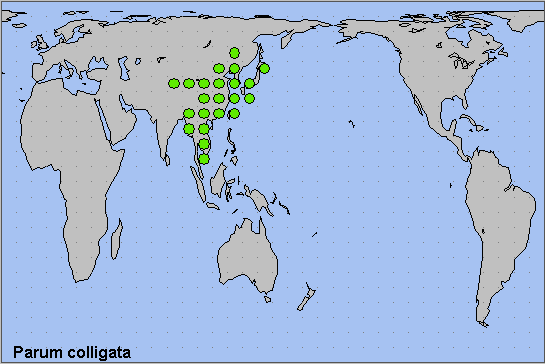
Holarctic; eastern Palaearctic region. Pleistocene refuge: Polycentric -- Japanese, Sinopacific, Sinotibetan and Yunnan refugia.
 Return to Sphingidae of the Eastern Palaearctic species list
Return to Sphingidae of the Eastern Palaearctic species list